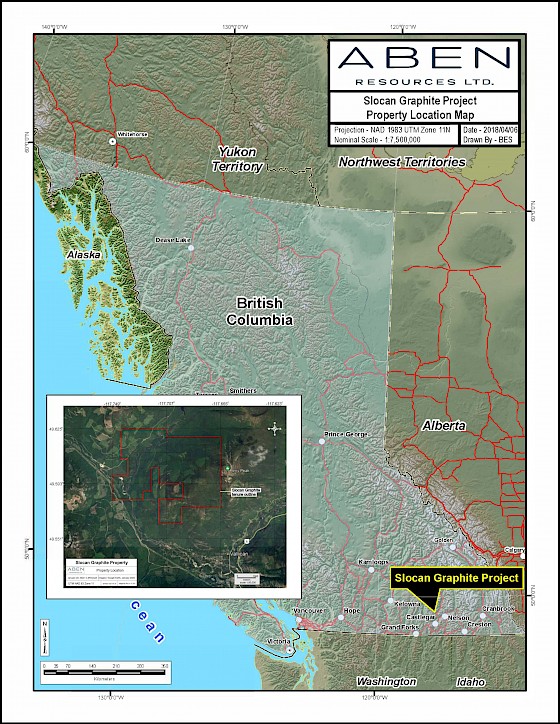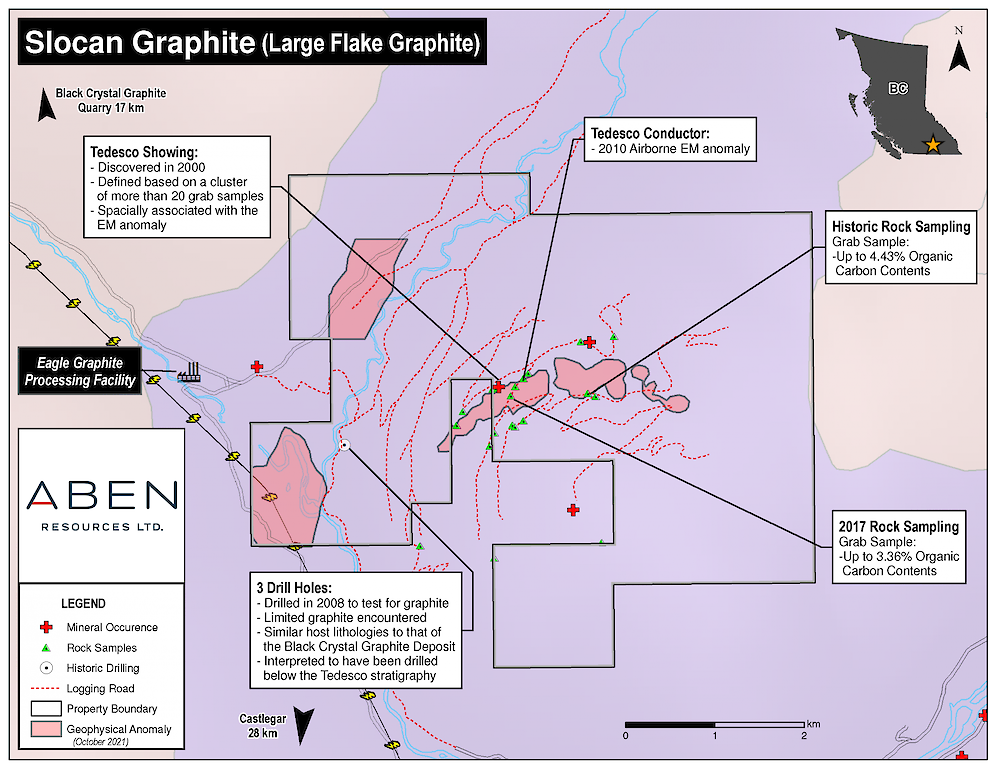British Columbia, Canada
The 2,826 ha Slocan Graphite Project is located in the Valhalla Range of the southern Selkirk Mountains, approximately 28km north of the city of Castlegar and 30 km west of the city of Nelson, in southeast British Columbia. The Project benefits from excellent infrastructure including a high-voltage transmission line within 1.2 km of the property boundaries, an extensive network of forestry roads on and around the property, and an existing graphite processing plant and facilities located 1.5 km west of the property, owned by Eagle Graphite Corporation.

Tedasco Graphite Showing
The 2017 Slocan Graphite Property tenure comprises the majority of the known graphite mineralization that defines the Tedesco Graphite Showing. The showing is defined based on a cluster of more than 20 graphitic bearing grab samples, spatially associated with an arcuate 3km x 1km strongly conductive airborne EM anomaly. Grab samples by the previous operator returned total organic carbon contents up to 4.43 % C. Verification sampling by Terralogic personnel in 2017 returned up to 3.36% total carbon while witnessing a widespread distribution of graphitic bearing rocks.
About Slocan Graphite Project
Graphite mineralization was initially discovered in logging road exposures in the late 1990’s. Ground and airborne geophysical surveys were completed in the project area in 2000 and 2010 respectively. Both surveys indicated strong conductive anomalies that correlate well with surface mineralization and are interpreted to extend along strike and down-dip of known occurrences. A limited number of documented samples have been taken across the Tedesco horizon and analyzed for carbon graphite ranging from trace values to grades of up to 3.36 and 4.43 percent.
Graphite mineralization is hosted primarily in carbonate and calc-silicate lithologies within the Passmore Dome of the Valhalla Metamorphic Complex, a geologic setting consistent with a crystalline flake graphite deposit model. Previous operators have estimated the mineralized horizon to be up to 50m thick, however, they cite that it is difficult to determine due to a lack of surface exposure. The horizon has never been tested by diamond drilling.
About Graphite
